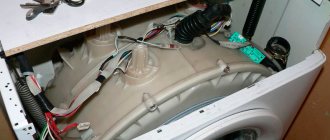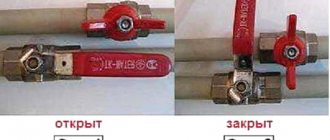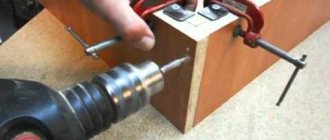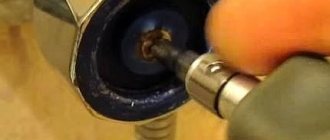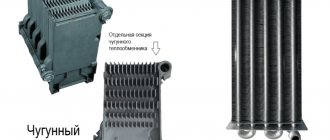Don't know why your washing machine isn't working as expected? In the article we looked at 6 malfunctions of such units that happen most often. The text tells why water is not pumped in/pumped out or is not heated, equipment is leaking or is making too much noise during operation.
Both “light” breakdowns that resulted from natural causes and problems that arose due to worn parts were considered. Read on to find out why washing machines break down and how to determine the breakdown yourself. The article also talks about when the equipment user can fix a problem on their own, and when it is worth calling a workshop.
The washing machine does not fill the drum with water
If a washing machine (for example, LG FH0B8LD0) does not pump water, and the owner of the equipment cannot determine at first glance what is wrong, it is not necessary to call a technician for diagnosis immediately. You can inspect the device yourself.
Natural causes
- Lack of water in the water supply. It happens that the owner programmed the wash on a timer, but the water was turned off. This is easy to check - just open the tap in the bathroom or kitchen. If there is no water in it, it means that repair work is underway nearby and you just need to wait until it is completed. You will need to stop the program and turn off the device until the water flows. If the things in the machine are slightly damp, then you need to take them out so that an unpleasant odor does not appear. There is some water left in the drum or tank - the drain mode will help.
- Weak pressure - because of this, the washer pumps water very slowly, so it feels like it’s not filling the tank at all. You can understand whether this is the reason in the same way as in the first option - open the tap. If the water flows weakly, then there is a problem with the pressure and you will have to wait.
- The supply valve is not fully open - it must be turned to the maximum “open” position.
- The water supply hose is crushed. This is especially true if the machine is built into a cabinet or rack. If the pressure and tap are in perfect order, you should look for the reason in the equipment itself.
Note: A machine with a “spare” tank will wash even when the water is turned off or its pressure is weak.
Water is not drawn due to a breakdown
- The door is not closed tightly. If the hatch of a unit (for example, Zanussi ZWSE680V) does not close properly, the problem is in the lock. Guide failure is a common consequence of long-term and active use. The problem may be hidden in a broken mechanism that blocks the door. To get things out, you need to unlock the lock through the lid or using a rope. Next is the job of the master. How to check if everything is ok with the lock? When closing the lid it should make a characteristic click. A notification appears on the screen of smart cars that the door is locked.
- The filter is clogged. To fix the problem, you need to turn off the water supply to the washing machine, disconnect the hose and check the fill valve mesh. Before disconnecting, you should place a bowl or bucket under the hose so as not to flood your neighbors. Dirt and rust from the filter are easy to clean. The main weapon is good pressure of running water and a needle for hard-to-reach places. For thorough cleaning, the mesh must be removed with pliers and rinsed under the tap.
- The winding with which the valve is equipped has overheated. In this case, you will need to change it.
- The water sensor is broken. The sensor is triggered by air pressure that passes through the tube. Information about pressure settings is indicated on the equipment body or in the documentation. To check the operation of the part, you need to connect a rubber or silicone tube of the same length and diameter instead of a hose. Then blow into it: if you hear clicks, it means the contact springs are working. Remember: before checking, the washing machine must be turned off, otherwise the heating element will overheat.
- The programmer, the “heart” of the washing machine, is broken. This is decided in the workshop. Of course, there is an option to use a syringe with a liquid designed to clean contacts, but these actions can lead to both removing carbon deposits from the contacts and completely damaging the programmer.
Call the master
A technician will come out for diagnostics and repairs upon prior request. You can make a call by phone or through the feedback form on the website. Provide the service manager with the following information:
- Make and model of the washing machine (see the instructions on the body).
- What happened, when, after what, the main symptoms of the breakdown (needed to select tools and components before leaving).
- Optimal time for repairs.
- Contact details.
The technician will tell you why the malfunction occurred and what to do only after visiting and inspecting the washing machine. Most breakdowns are fixed within 1-2 hours; removal of equipment to our service is not required. Immediately after the repair is completed, the washing machine will be ready for use. In rare cases, repairs may require more time and a return visit from the technician. We are ready to order any components and perform complex software repairs, but this often increases the work time.
The machine does not spin clothes after washing
If the wrong mode is selected, the washing machine (even as powerful as the LG FH0B8WD7) will not wring out things. It is only necessary to run an additional spin after the cycle. Or stop the program and select one that involves subsequent spinning of the laundry.
The second natural reason is too low revs. If the user has programmed the equipment to the minimum, the laundry will remain damp, and it will seem that the washer did not spin it.
But most of the reasons why washing equipment does not spin are caused by malfunctions of the “internals” of the device:
Overload and lack of balance
The problem arises if the equipment does not have a sensor to detect imbalance. When there is too much content in the drum or the item is heavy (the recommended loading weight is exceeded), it simply cannot spin. The solution to this problem is simple - take out half the laundry, distribute the rest more evenly throughout the drum and try again.
Uneven distribution of laundry
This reason is similar to the first, but occurs when the user loads too many clothes with long legs/sleeves. During washing, it gathers into one large lump that cannot be wrung out properly. You will need to drain the water, and then spread the contents of the drum evenly and start the spin cycle again.
Useful: The Indesit IWSB 61051 C ECO EU has an auto option that controls balancing - things are distributed as expected, automatically. Even trousers and sweaters.
The filter or drain valve does not work
Water does not leave the tank at the right time, which blocks the spin cycle. The reason is a clogged drain filter. It is located at the bottom of the washing machine behind the removable panel or lid. The exact location of the component is indicated in the instructions for the specific model.
The part intended for filtration must be checked for the presence of foreign objects and cleaned. To do this, disconnect the washing machine from the network, place a bowl under the filter to collect water and carefully remove it. If the valve is dirty, you will need to clean the tube and/or pipe.
Important: The filtration part most often becomes clogged if the user forgets to check the pockets before loading into the drum, and store receipts, coins and other small items remain in them. They end up in the drain hose and then into the filter.
Damage to the tachometer
This is a device responsible for controlling the number of revolutions depending on the selected program and the weight of the loaded laundry. The tachometer fails due to frequent overloads, loose fastenings, faulty contacts and wiring. A loose fastening can be “tightened”; it is better to entrust the solution to the wiring problem to a specialist, but if the problem is directly in the tachometer, then it will have to be changed.
Control module malfunction
The control panel, which is programmed to perform functions that have separate settings for a specific operating mode, stops sending commands to the drum. This is not the case when you should try to “reanimate” the equipment yourself.
Engine malfunction
A common problem during long-term use. The malfunction occurs both in the engine hardware and in the “brushes”, which wear out over time. The “brushes” must be replaced, but to do this you will have to disassemble the body of the washer (for example, on the Bosch WAW32640EU, the manufacturer produces components for several years after the equipment is discontinued). If you want to play it safe, you should entrust the matter to a repairman.
System error codes
Modern devices are equipped with digital control modules. They provide the display of a code corresponding to the malfunction. Here are some of them and possible causes of failure.
On an LG machine the following codes will appear:
- DE – the washing machine door does not lock;
- PF – power failure;
- SE – the drum shaft does not rotate.
Bosch equipment signals an error with the following codes:
- E67, F67 – programmer or control module error;
- F01, F16, E16, F34 – hatch malfunction;
- F21 – the drum does not rotate.
Examples of Samsung brand error codes:
- 5E, 5C, E2 - water does not drain from the machine;
- 4E, 4C, E1 - water does not fill into the machine;
- LE, LC, E9 - water spontaneously drains from the machine;
- UC, 9C - unstable voltage in the mains (too low or high)
Indesit brand error codes:
- F01, F02 - electric motor problems;
- F03, F04, F07, F13 - sensor failure;
- F05, F10, F11, H2O - incorrect draining and filling.
Only a specialist can carry out an accurate diagnosis. Knowing the error codes can help the client collect as much information as possible before the specialist arrives. This will speed up the process and make the task easier for a professional.
Why doesn't the heating element heat the water?
If the water in the washing equipment does not heat up, the problem is hidden in a broken heating element or a problem in the wiring. Thus, the wires in most machines (the Indesit BWSA71253WEU is no exception) are located near the body: the wiring frays over time due to vibrations created by the equipment. You will need to solder the damaged sections of the wire, but it is better to replace them with new ones.
Common Causes
- Heating element malfunction. To check the condition of the washing machine element, which heats the water for washing, you need to “ring” the tester. If the heating element is broken, it needs to be changed. It's not difficult to do it yourself. You will need to remove the back “wall” of the machine, for example, Candy CSS4 1372D3/1-S (the unit must be disconnected from the power supply), then loosen the fastenings of the installed part, dismantle it and install a new one. When replacing, you need to be careful not to damage the washer body.
- Scale. Sometimes the heating element begins to work weaker due to scale that has formed. It is enough to take out the part and clean it. To avoid this in the future, it is recommended to use special softeners or install an additional water filter.
- Relay or programmer malfunction. It is better to entrust the repair and replacement of these components to a specialist.
- Broken heating sensor. This element tells the “control” module when to start the heating element. If the sensor is broken, it will have to be replaced.
- The sensor that detects the water level is broken. A blockage in the tube (it is not difficult to clean) or wear and tear leads to breakdown - then you need to replace it.
Checking the serviceability of the socket
There are often situations when the machine does not start the washing cycle because the socket is broken.
The easiest way to check the functionality of the power supply is with an indicator screwdriver. If such a measuring device is not at hand, you can connect other electrical equipment to it (for example, a light bulb or a mobile phone charger). If the power supply connector is working properly, but the washing machine still refuses to start washing, the reason should be looked for in the device itself; for this you will need a multimeter. See also -
Atlant washing machine displays error F3 - what does it mean?
The machine does not drain the water after washing
After the cycle is completed, is there any water left in the washing machine (for example, Gorenje WEI74S3B)? There are 4 reasons for this:
- Program crashes - often caused by a power outage - can be resolved by restarting. First, the program is canceled urgently: the device is disconnected from the outlet (for example, a convenient option with grounding - MOSAIC Legrand 3xSchuko) and turned on again after five minutes. Another way is to change the program to the shortest one. For example, turn on the “rinse + spin” mode or quick wash, which the Samsung WF60F1R0G0WD also has. If it doesn’t help, you need to call a specialist.
- The filter is worn out. To check the condition of the filter, you must first drain the water using the door located in the lower corner of the unit. This procedure should be carried out carefully, having previously prepared a container for draining the water so as not to flood the room. If the filter is clogged, it should be cleaned or replaced.
- The hose is worn out - the part will have to be replaced. If it looks intact, it is worth checking whether the sewer pipe or siphon is clogged. To do this, disconnect the hose, hang it in the sink and turn on the water drain mode. If it flows normally, then the problem is in the sewer itself.
- The pump is not working properly. If you can’t hear it working or, on the contrary, it’s too loud, it means it’s broken. Perhaps it's clogged. To determine the exact cause, you need to take out the pump and see if hair or threads are wrapped around the shaft. If yes, remove them and install the pump again. If the part is clean, but the tester shows that there is no voltage being supplied to it, the element will have to be replaced.
Equipment may make sounds - this is normal.
It is worth understanding that a washing machine, like any unit, still creates some sounds during operation. In particular, you may hear:
- the sound of water pouring as it is drawn;
- the noise of a running drain pump (pump) when draining water;
- the sound of the engine when the drum rotates;
- drum noise at high speeds during spinning;
- clicks if the machine switches modes, for example, moves from the washing phase to rinsing mode, etc.;
- the noise of water heating, like in a kettle, during the washing process.
Don't worry, these sounds are not a malfunction.
The washing machine is leaking
If an automatic washing device leaks, first you need to find out where the liquid is coming from. It can flow from below, or it can pour out of the hatch. This is usually caused by damage to the washer parts.
Classic reasons
- A problem with the hose is the most common reason why the device leaks (for example, Bosch WAN 28260 BY). If there is a violation at the joint, the problem is solved by replacing the gasket. If the reason is a damaged hose, it should be replaced.
- The tank is damaged - in this case it is impossible to do without replacing components. To determine problems in the tank, you need to inspect the bottom of the device. You will need a flashlight or a keychain option, like KingCamp LED 1. You can find where the machine is leaking by following the traces of water. If the washing unit has a vertical loading, then you will need to remove the part of the housing located on the side.
- The oil seal has failed - in this case it is worth looking at the tank and the place where the bearings are located. If they are worn out, they, like the oil seal, will need to be replaced.
- The pipe for filling into the tank is damaged - the fixation is weakened in the place where the parts are connected. To restore the fasteners, epoxy resin is needed. To do this, you will need to dismantle the pipe, dry it, remove the adhesive residue, and then apply “epoxy” or moisture-resistant glue to fix the part during installation in the same place.
- The problem is in the drain pipe - it is recommended to replace the element by first removing the top cover of the washing machine body (for example, Bosch WLG24160BY).
- The drain pump is worn out - this can also be solved by replacing it.
- The seal of the hatch has broken down - the cuff has become “aged”. The damage is repaired with a rubber patch, which is glued with waterproof glue. For strength, it is recommended to remove the fixing clamps and change the position of the repaired part so that the patch is on top.
- The dispenser is faulty: the “hopper” (the recess for filling with washing powder) is clogged or the water supply power has increased, the water inlet valve has broken. If the problem is in the “hopper” or the dispenser compartment, it is worth cleaning the spare parts; if it is in the valve, it will need to be replaced.
Getting to the capacitor
To inspect the capacitor, you need to get to it. This is not easy to do, since the device is located on the control board - the back side of the dashboard. To dismantle the latter, you will have to partially disassemble the washing machine. We proceed as follows:
It is not recommended to completely disconnect the device from the washing machine - only professionals can connect the wires back. It is better to leave the wiring alone, turning the board the right way around and placing it on top of the washing machine. Then we find a capacitor on the module and proceed to diagnose it.
